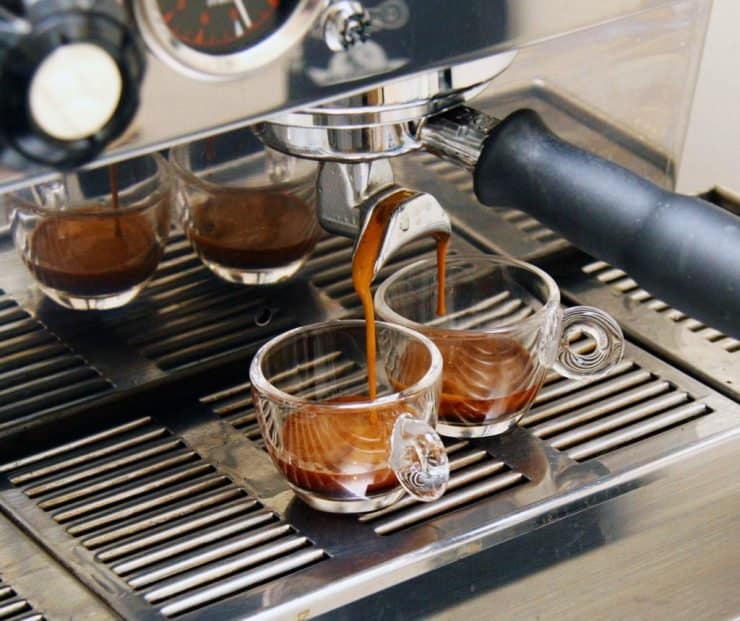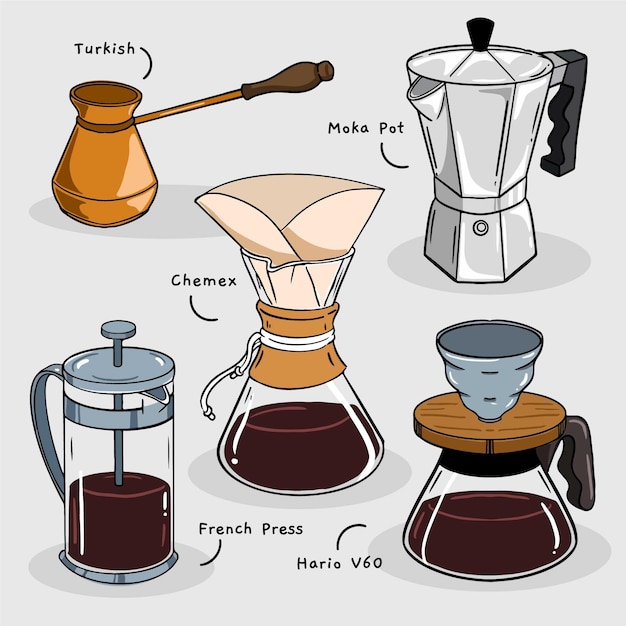A Comprehensive Overview to Different Coffee Brewing Methods You Ought To Attempt
A Comprehensive Overview to Different Coffee Brewing Methods You Ought To Attempt
Blog Article
The Scientific Research Behind Coffee Developing: Just How Temperature and Time Affect Your Beverage
Understanding the scientific research behind coffee brewing reveals that temperature and time are not plain variables yet crucial components that determine the beverage's taste account and general quality. As we check out the subtleties of these elements, the question occurs: just how can one properly equilibrium temperature and time to attain that perfect brew?
The Chemistry of Coffee Removal
The chemistry of coffee extraction delves into the detailed procedures that transform raw coffee beans into the aromatic beverage appreciated worldwide. This makeover primarily involves the solubility of different substances present in the beans, which are affected by variables such as work dimension, water high quality, and the developing method employed.
Throughout the brewing procedure, hot water works as a solvent, removing soluble compounds, including high levels of caffeine, lipids, acids, and sugars, from the coffee premises. Each substance adds to the flavor profile, fragrance, and body of the last beverage. For instance, acids are responsible for zesty and brilliant notes, while oils add to an abundant mouthfeel.
The preliminary phases of developing extract acids and sugars, leading to a positive acidity, while extended removal can lead to bitterness due to over-extraction of undesirable compounds. Understanding these chemical communications is crucial for optimizing developing strategies, as the balance between removal time and water temperature level can substantially influence the overall quality of the coffee.
Perfect Brewing Temperatures
Finding the right developing temperature is important for unlocking the complete capacity of coffee tastes and fragrances - coffee brewing methods. Research study indicates that the optimal array for brewing coffee lies in between 195 ° F to 205 ° F(90 ° C to 96 ° C) Within this variety, the extraction procedure efficiently dissolves the preferable soluble compounds in coffee beans, bring about a tasty and well balanced mug
Brewing at reduced temperatures, such as listed below 195 ° F(90 ° C ), may cause under-extraction, producing a weak and acidic mixture with soft tastes. Conversely, brewing at temperatures exceeding 205 ° F(96 ° C) can lead to over-extraction, producing a severe and bitter taste as a result of the extreme dissolution of unfavorable compounds, such as tannins.
Moreover, the ideal brewing temperature level can vary relying on the coffee bean type and roast level. Lighter roasts often profit from slightly higher temperature levels to boost their complex flavor accounts, while darker roasts might be better fit to reduced temperatures to reduce resentment.
Ultimately, maintaining precision in brewing temperatures is important for accomplishing an unified equilibrium of tastes, ensuring that every cup of coffee provides a gratifying sensory experience.
Influence of Developing Time
Brewing time plays a pivotal role in identifying the flavor profile and general high quality of coffee. The extraction procedure, which influences the taste, aroma, and body of the beverage, is mostly reliant on for how long the coffee premises are in call with water. Much shorter developing times can result in under-extraction, leading to a weak or sour taste, this post as not adequate soluble compounds are dissolved. Alternatively, long term developing can lead to over-extraction, where undesirable substances are released, leading to an astringent or bitter taste.
Ideal brewing time differs depending upon the method made use of and the grind size of the coffee. For example, a French press typically calls for regarding four mins, while espresso extraction is usually completed within 25 to 30 secs. It is important to calibrate brewing time in combination with various other variables, such as water temperature and coffee-to-water ratio, to achieve the preferred taste profile.
Comprehending the impact of developing time makes it possible for coffee lovers to refine their developing methods, ultimately boosting the sensory experience of their cup (coffee brewing methods). With mindful interest to this variable, one can open the full possibility of the coffee, disclosing its special attributes and nuances
Brewing Methods and Their Results

For circumstances, methods like French press and cold brew permit a much longer steeping time, causing a fuller body and durable taste as a result of increased extraction of oils and soluble solids. On the other hand, espresso developing makes use of high pressure and a shorter extraction time, producing a concentrated shot that highlights intense flavors and a rich crema.
Pour-over methods, such as Chemex or V60, supply an even more regulated removal procedure, permitting the maker to manipulate flow rate and water distribution, which can enhance brightness and clearness. Percolation methods cycle water through the coffee grounds numerous times, leading her response to a more powerful, often bitter taste.
Lastly, using paper filters versus steel filters can also impact the final taste; paper filters generally generate a cleaner mug by capturing oils and great fragments, while metal filters allow more oils to travel through, adding to a fuller mouthfeel - coffee brewing methods. Recognizing these subtleties can raise the coffee experience dramatically
Tips for Developing Your Mixture
A well-executed brew can transform even the most basic coffee right into a remarkable experience. To accomplish this, focus to information is crucial. Start with premium, freshly roasted beans, as their taste account lessens over time. Grind the beans right before making to maximize quality, making certain the grind size matches your brewing method-- coarser for French press and finer for espresso.
Water high quality plays a vital role; use filteringed system water without contaminations. The optimal developing temperature ranges in between 195 ° F and 205 ° F(90 ° C to 96 ° C ) Also hot can swelter the coffee, while also awesome might under-extract tastes.
Timing is equally crucial. For immersion approaches, steeping for three to 5 mins is optimal, whereas drip methods commonly take around five mins. Trying out brew times to discover your recommended strength.

Verdict
In recap, the complex connection between temperature level and time is extremely important in the coffee developing process. Recognizing these clinical principles encourages people to fine-tune their developing this contact form strategies, eventually leading to a more delightful and well balanced coffee experience.
Comprehending the science behind coffee developing reveals that temperature level and time are not plain variables but pivotal components that dictate the beverage's flavor profile and total high quality. Understanding these chemical communications is crucial for maximizing brewing strategies, as the balance in between extraction time and water temperature level can substantially influence the general quality of the coffee.Developing time plays a pivotal function in identifying the taste profile and general quality of coffee. By focusing on these components-- bean quality, grind dimension, water temperature, steeping time, and proportion-- you can elevate your coffee developing process, resulting in a regularly premium cup.
In recap, the intricate connection in between temperature and time is critical in the coffee developing process.
Report this page